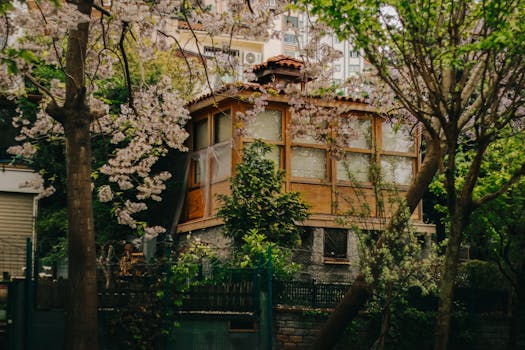
Urban Green Spaces: The Future of Outdoor Living in European Cities by 2025
Urban Green Spaces are becoming increasingly important in European cities, as they provide a sustainable and healthy environment for citizens to live, work, and relax. With the growing awareness of climate change and the need for green infrastructure, urban green spaces are being designed and developed to meet the needs of a rapidly changing world.
Introduction to Urban Green Spaces
Urban green spaces refer to any area of vegetation, water, or other natural elements within an urban environment. These spaces can range from small parks and gardens to large nature reserves and green roofs. Urban green spaces play a crucial role in maintaining the quality of life in cities, providing numerous benefits for both the environment and human health.
Benefits of Urban Green Spaces
Urban green spaces offer a wide range of benefits, including:
- Improved Air Quality: Urban green spaces help to reduce air pollution by absorbing pollutants and producing oxygen.
- Climate Regulation: Urban green spaces can help to regulate the urban climate, reducing the urban heat island effect and mitigating the effects of extreme weather events.
- Biodiversity Conservation: Urban green spaces provide habitats for a wide range of plant and animal species, helping to conserve biodiversity in urban areas.
- Recreation and Leisure: Urban green spaces provide opportunities for recreation, leisure, and social interaction, improving the mental and physical health of citizens.
- Economic Benefits: Urban green spaces can increase property values, attract tourism, and support local businesses, contributing to the economic development of cities.
Design and Development of Urban Green Spaces
The design and development of urban green spaces require a multidisciplinary approach, involving urban planners, architects, landscape architects, and engineers. The following principles should be considered when designing and developing urban green spaces:
- Sustainability: Urban green spaces should be designed and developed with sustainability in mind, using materials and techniques that minimize environmental impact.
- Accessibility: Urban green spaces should be accessible to all members of the community, regardless of age, ability, or socioeconomic status.
- Community Engagement: Urban green spaces should be designed and developed in consultation with local communities, ensuring that they meet the needs and aspirations of citizens.
- Innovative Technologies: Urban green spaces can incorporate innovative technologies, such as green roofs, green walls, and urban agriculture, to enhance their sustainability and functionality.
Case Studies of Urban Green Spaces in European Cities
Several European cities are leading the way in the design and development of urban green spaces. Some notable examples include:
- Barcelona’s Superblock Program: Barcelona’s Superblock Program is a pioneering initiative that aims to reduce traffic congestion and air pollution by creating car-free zones and green spaces throughout the city.
- Copenhagen’s Green Roofs: Copenhagen is renowned for its green roofs, which provide insulation, reduce stormwater runoff, and create habitats for wildlife.
- London’s Urban Parks: London’s urban parks, such as Hyde Park and Regent’s Park, provide recreational spaces for citizens and help to mitigate the urban heat island effect.
Conclusion
Urban green spaces are a vital component of sustainable and healthy cities. By incorporating green infrastructure into urban planning, cities can improve air quality, regulate the climate, conserve biodiversity, and provide recreational spaces for citizens. As we look to the future, it is essential that we prioritize the design and development of urban green spaces, using innovative technologies and community engagement to create sustainable and thriving cities.






